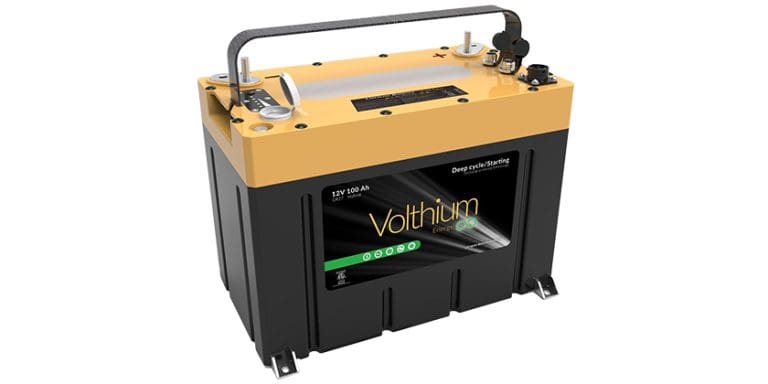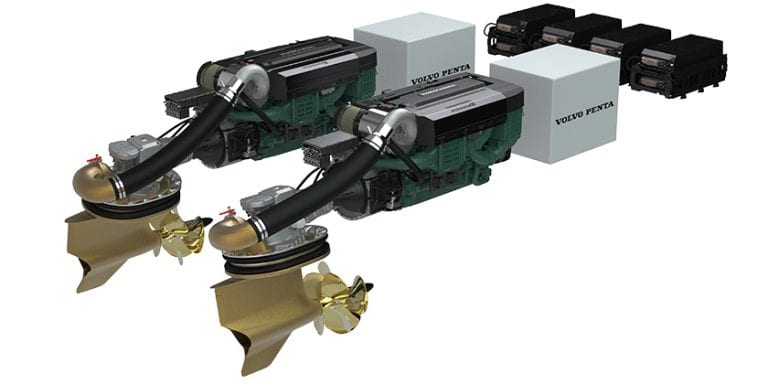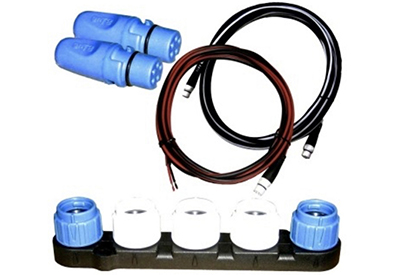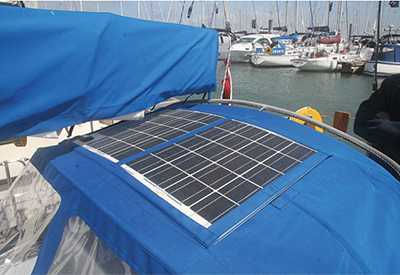Smart Battery Chargers for Smart Boaters
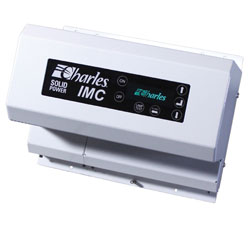
Smart chargers are not new, but they are getting smarter all the time and that’s a great thing.
In almost every issue of Canadian Yachting, we suggest you add some new or upgraded piece of equipment to your boat and virtually everything runs on electricity. The highest draw equipment onboard would be your windlass, air conditioning and refrigeration, but new entertainment systems, navigation equipment and galley items can all add big load increases.
Complicating this, battery manufacturers are always working to improve the performance of their products and new batteries can change the “charging profile” of the battery bank. Also, boaters sometimes replace only one battery vs. all the batteries in the bank which, again, changes the charging profile.
Smart chargers have been developed to deliver more effective three-stage charging and to better accommodate variations in new battery characteristics, but there are some key considerations. First, the boat builder originally specified a charging system that would work with the OEM batteries. This system likely anticipated that charging would be at the dockside through the week (so over long periods of time) and the charger would be matched to both the batteries and the OEM equipment that draws power.
If you have upgraded or added equipment, the original system may become taxed to the max. At that point, some owners increase their battery bank capacity with more, or larger batteries, but that demands an increase in charging to match that capacity.
Another consideration is the way the boat is used. With all that new equipment, time at anchor and away from shore power may stress the system beyond what the boat builder ever anticipated and if you are running the generator just to re-charge batteries, it may not be under sufficient load, wasting fuel and potentially damaging a diesel genset over time.
Next, there’s a new issue that we just learned about in a conversation with the engineering manager for one of the biggest manufacturers of marine charging systems. It seems that some people assume all new batteries act like the new lithium ion batteries. Some of us have rapidly become accustomed to the amazing new lithium ion technology and its performance. Among those who have recently replaced their battery banks, a few boaters now expect that they can deeply discharge the new batteries (like they do their computer batteries for example), then expect them to recharge in a few hours.
If you bought lithium ion batteries like the Mastervolt Li-On MLI 12/320 (See Canadian Yachting November 2009, page 46) then OK…but new conventional lead acid batteries just don’t perform like that.
There is confusion out there for sure.
There are four main types of batteries you find in marine use in larger boats:
1) Traditional lead acid flooded cell batteries
2) Absorbed glass mat (AGM) which is still lead and acid but of a very different design
3) Gel batteries, again using lead and acid but with much different characteristics
4) Lithium Ion (available in a few different variations)
Traditional lead acid batteries, often called flooded cell batteries, should always be maintained with a full charge and these types of batteries can only be discharged to typically, about 50% without suffering some irreversible damage.
This damage is called “sulfation” and when a battery drops below a full charge for long periods of time, hard lead sulfate crystals can fill the pores in the plates rendering it almost useless.
New, high technology lithium ion batteries can literally be discharged to 80% and then, can be recharged to full capacity in a surprisingly short time. These batteries have special battery management systems built in and they require very special chargers too. Lithium ion is in a totally different class.
For the other types of batteries, new high-tech “smart chargers” can improve both overall performance and also charging times.
Charles Industries recently introduced their new IMC Charger line. These are state-of-the-art battery chargers specifically created for harsh marine environments and they feature configurable settings with a revolutionary “man-machine” interface which is a touch-panel control.
Among the key features are that these are four-bank programmable chargers with independent 12/24 VDC selection and they are available in 20 amp increments from 20 to 120 amps to best match your boat’s battery set up. A Limp Home Mode on the 40 amp units and above allows power flow to continue operation at a lower output level if one power module fails. There is also a smart alarm package provides output failure, high and low voltage and battery failure with audible alarm but the main advance on these chargers is the Display Technology and Configuration.
Simple intuitive menus for fast configuration of AC input voltage, DC output voltage, charge current, charge mode, battery type, battery fault indicator and over temp indicator with auto current reduction are controlled by a vacuum fluorescent display (VFD) for easy viewing.
Another leading electrical specialist is Mastervolt who recently completed a system-wide upgrade of its top-end battery chargers – the Mass Charger range – to make them even tougher with greater resistance to heat, vibration, humidity, and condensation.
Life in an engine room can be a bad environment for batteries and chargers. A special cooling process means the Mass Charger range can operate at full power, continuously, in an engine room with the temperature at a blistering 45o C, and the vibration rating is to the demanding IEC60945 standard.
B.C.-based Xantrex Technology Inc., a subsidiary of Schneider Electric, expanded their Truecharge 2 Battery Charger Series with the introduction of their 60-amp charger expanding that series of smart chargers to include 20, 40 and 60-amp models, each designed for maximum versatility and performance.
They call these smart chargers because they do so much more than merely charge the battery. An example is the ProNautic P series of chargers that have twelve digitally-controlled performance charging profiles with finger tip selection. A ProNautic P can charge, condition, maintain and even re-condition batteries while extending battery life through a complex series of charging steps.
ProNautic P models automatically remove stress on a fully charged battery by incorporating a built-in conservation mode that reduces float voltage when the unit does not register a load greater than 5 amps over a 72-hour period. Packed with intelligent features, the charger systems automatically recondition batteries to improve battery life and reserve power performance every 21 days if in a state of short- or long-term storage.
It is smart indeed! And, it is smarter still to go to your marina or repair yard to get a properly qualified technician to install any of the items discussed here. Even just installing a set of new batteries can be complicated because the charging profile will probably have changed. The charger needs to have the correct charging profile to work to maximum effectiveness.
The charger needs to be a minimum of two feet up from potential bilge-water splashes, as far as reasonable from heat and vibration, connected with suitably heavy gauge wires and tightened so there is no area of higher resistance.
Really, considering the electrical load demands in modern cruising yachts, it makes sense to pay the pros to get the right outfit for your needs. Smart chargers for smart boaters!
SUPPLIERS
www.mastervolt.com
www.charlesindustries.com
www.xantrex.com
By Andy Adams

